Downregulation of angiopoietin-like protein 2 inhibits cementoblast differentiation partially by activating the ERK1/2 signaling pathway
- PMID: 30787989
- PMCID: PMC6357320
Downregulation of angiopoietin-like protein 2 inhibits cementoblast differentiation partially by activating the ERK1/2 signaling pathway
Abstract
Angiopoietin-like protein 2 (ANGPTL2) is abundantly expressed in adipose tissue, is associated with tissue homeostasis, and promotes osteoblast and chondrocyte differentiation. In teeth, cementum, a thin layer of mineralized tissue that is formed by cementoblasts, covers the entire root surface and is a vital component of periodontium. The cementoblasts regulate the deposition and mineralization of the cementum matrix. However, the effects of ANGPTL2 on cementoblast differentiation have not been studied. The objective of this study was to elucidate the role of ANGPTL2 during cementoblast differentiation and determine its underlying mechanisms. Our results showed that the expression levels of ANGPTL2 gradually increased during cementoblast differentiation. After ANGPTL2 was knocked down using short-hairpin RNA, the levels of the osteogenic markers osterix (OSX), alkaline phosphatase (ALP), bone sialoprotein (BSP), and osteocalcin (OCN) decreased. In addition, ALP activity and the number of calcified nodules were dramatically reduced compared with those in the negative control. Interestingly, the ERK1/2 signaling pathway was activated after ANGPTL2 knockdown. Treatment with PD98059, the inhibitor of the ERK1/2 signaling pathway, partially rescued the decreased differentiation capability of cementoblast caused by ANGPTL2 downregulation. Collectively, ANGPTL2 knockdown inhibited cementoblast differentiation partially by activating the ERK1/2 signaling pathway. These findings suggest that ANGPTL2 was indispensable in cementoblast differentiation.
Keywords: ANGPTL2; ERK1/2 signaling pathway; cementoblast differentiation; cementogenesis; dental cementum; periodontal reconstruction.
Conflict of interest statement
None.
Figures
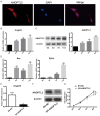
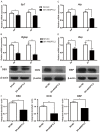
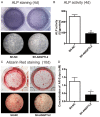
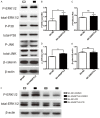
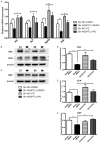
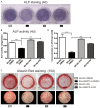
Similar articles
-
Yes-associated protein 1 promotes the differentiation and mineralization of cementoblast.J Cell Physiol. 2018 Mar;233(3):2213-2224. doi: 10.1002/jcp.26089. Epub 2017 Sep 25. J Cell Physiol. 2018. PMID: 28688217
-
Osterix controls cementoblast differentiation through downregulation of Wnt-signaling via enhancing DKK1 expression.Int J Biol Sci. 2015 Feb 5;11(3):335-44. doi: 10.7150/ijbs.10874. eCollection 2015. Int J Biol Sci. 2015. PMID: 25678852 Free PMC article.
-
Wnt signaling inhibits cementoblast differentiation and promotes proliferation.Bone. 2009 May;44(5):805-12. doi: 10.1016/j.bone.2008.12.029. Epub 2009 Jan 14. Bone. 2009. PMID: 19442631
-
Developmental pathways of periodontal tissue regeneration: Developmental diversities of tooth morphogenesis do also map capacity of periodontal tissue regeneration?J Periodontal Res. 2019 Feb;54(1):10-26. doi: 10.1111/jre.12596. Epub 2018 Sep 12. J Periodontal Res. 2019. PMID: 30207395 Review.
-
Effect of mechanical loading on periodontal cells.Crit Rev Oral Biol Med. 2001;12(5):414-24. doi: 10.1177/10454411010120050401. Crit Rev Oral Biol Med. 2001. PMID: 12002823 Review.
References
-
- Pihlstrom BL, Michalowicz BS, Johnson NW. Periodontal diseases. Lancet. 2005;366:1809–1820. - PubMed
-
- Bosshardt DD, Selvig KA. Dental cementum: the dynamic tissue covering of the root. Periodontol 2000. 1997;13:41–75. - PubMed
-
- Zeichner-David M. Regeneration of periodontal tissues: cementogenesis revisited. Periodontol 2000. 2006;41:196–217. - PubMed
LinkOut - more resources
Full Text Sources
Miscellaneous
